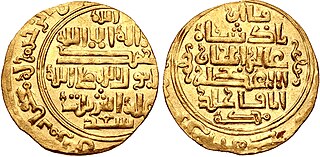Related Research Articles

Abaqa Khan, was the second Mongol ruler (Ilkhan) of the Ilkhanate. The son of Hulagu Khan and Lady Yesünčin. He was the grandson of Tolui and reigned from 1265 to 1282 and was succeeded by his brother Ahmed Tekuder. Much of Abaqa's reign was consumed with civil wars in the Mongol Empire, such as those between the Ilkhanate and the northern khanate of the Golden Horde. Abaqa also engaged in unsuccessful attempts at military invasion of Syria, including the Second Battle of Homs.

Ahmed Tekuder, also known as Sultan Ahmad, was the sultan of the Persian-based Ilkhanate, son of Hulegu and brother of Abaqa. He was eventually succeeded by his nephew Arghun Khan.
Buraq Hajib, also spelt Baraq Hajib, was a Khitan who founded the Qutlugh-Khanid dynasty in the southern Persian province of Kirman the early 13th century after the conquest of the sinicised Qara Khitai by the Mongol Empire. The dynasty founded by Buraq Hajib ended in the 14th century.

Arghun Khan was the fourth ruler of the Mongol empire's Ilkhanate, from 1284 to 1291. He was the son of Abaqa Khan, and like his father, was a devout Buddhist. He was known for sending several embassies to Europe in an unsuccessful attempt to form a Franco–Mongol alliance against the Muslims in the Holy Land. It was also Arghun who requested a new bride from his great-uncle Kublai Khan. The mission to escort the young Kököchin across Asia to Arghun was reportedly taken by Marco Polo. Arghun died before Kököchin arrived, so she instead married Arghun's son, Ghazan.

Mahmud Ghazan was the seventh ruler of the Mongol Empire's Ilkhanate division in modern-day Iran from 1295 to 1304. He was the son of Arghun, grandson of Abaqa Khan and great-grandson of Hulagu Khan continuing a long line of rulers who were direct descendants of Genghis Khan. Considered the most prominent of the Ilkhans, he is best known for making a conversion to Islam and meeting Imam Ibn Taymiyya in 1295 when he took the throne, marking a turning point for the dominant religion of Mongols in Western Asia. One of the many principal wives of him was Kököchin, a Mongol princess sent by his great-uncle Kublai Khan.

Gaykhatu was the fifth Ilkhanate ruler in Iran. He reigned from 1291 to 1295. His Buddhist baghshi gave him the Tibetan name Rinchindorj which appeared on his paper money.

Baydu was the sixth ruler of the Mongol empire's Ilkhanate division in Iran. He was the son of Taraqai, who was in turn the fifth son of Hulagu Khan. He succeeded his cousin Gaykhatu as khan of the Ilkhanate state in 1295.
Taghachar, also spelled Tajir, Ta'achar was a commander in the army of the Mongol Empire. He was one of the conspirators involved in the overthrow of three Ilkhanate khans, and placed the short-lived Baidu on the throne in 1295.
Nawrūz was a son of governor Arghun Aqa, and was a powerful Oirat emir of the 13th century who played an important role in the politics of the Mongol Ilkhanate.

Buqa was a Mongol lord and chancellor who was instrumental in sweeping Arghun to power as the fourth Il-Khan of Iran in 1284 and became his chief minister (vizier) and advisor, succeeding Shams ad-Din Juvayni whom Arghun had executed.

Abish Khatun — was the 9th and last ruler of the Salghurids of Shiraz from 1264 to 1282.

Safwat al-Din Khatun (1256–1295), otherwise known as Padishah Khatun, was the ruler of Kirman from 1292 until 1295 as a member of the Mongol vassal Qutlugh-Khanid dynasty in Persia.
Kutlugh Turkan, was a sovereign ruler of Kirman from 1257 until 1282.

The Qutlugh-Khanids was a dynasty of ethnic Khitan origin that ruled over Kirman from 1222 to 1306.
Qutb al-Din Mohammad — was Qutlughanid ruler of Kerman and a nephew of Buraq Hajib, founder of dynasty.
Rukn al-Din Mubarak Khwaja was a Qutlugkhanid ruler of Kerman and the son of Buraq Hajib, founder of the dynasty.
Muzaffar al-Din Hajjaj was a nominal Qutlughkhanid prince of Kerman, a son of Qutb al-Din Mohammad and Kutlugh Turkan.
Kurdujin Khatun was an Ilkhanid princess, ruler of Kirman in 1295–1296, and of Shiraz in 1319–1338.
Muzaffar al-Din Mohammad was the penultimate Qutlughkhanid ruler of Kerman.
Qutb al-Din Shah Jahan was the last Qutlughkhanid ruler of Kirman.
References
- ↑ Mernissi, Fatema; trans. Mary Jo Lakeland (2003). The Forgotten Queens of Islam. Oxford University Press. pp. 29; 100-101 ISBN 978-0-19-579868-5.
- ↑ Lane, George E. (2003-09-01). Early Mongol Rule in Thirteenth-Century Iran: A Persian Renaissance (1 ed.). Routledge. p. 120. doi:10.4324/9780203417874. ISBN 9780203417874.
- ↑ "PĀDŠĀH ḴĀTUN – Encyclopaedia Iranica". www.iranicaonline.org. Retrieved 2019-10-04.
- ↑ Brookshaw, Dominic Parviz (2005). "Odes of a Poet-Princess: The Ghazals of Jahān-Malik Khātūn". Iran. 43: 176. doi:10.2307/4300688. JSTOR 4300688.
- ↑ Gençtürk, Ci̇han (2017-04-25). "KİRMÂN'DA SALTANAT SÜREN KADIN BİR HÜKÜMDAR: SAVVETÜDDÎN PADİŞÂH HATUN". Ağrı İbrahim Çeçen Üniversitesi Sosyal Bilimler Enstitüsü Dergisi. 3 (1): 65–82. ISSN 2149-3006.